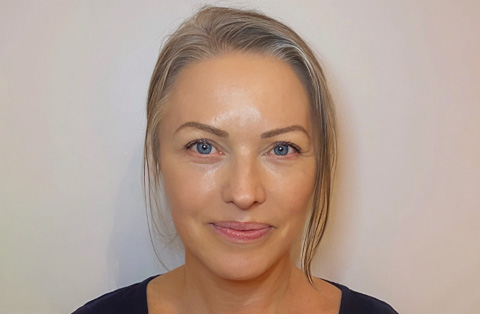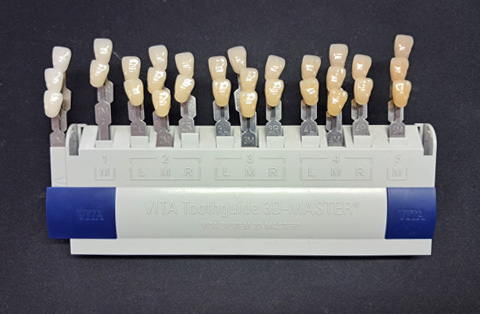As we age, our facial structure changes, often leading to the development of jowls. These changes can significantly alter the contours of the face, impacting one’s appearance. The Jowl Lift is a specialized cosmetic procedure aimed at addressing this specific issue, rejuvenating the lower part of the face to restore a more youthful and defined look.
The importance of facial aesthetics extends beyond mere appearance. Our face is a pivotal part of our identity and the first thing others often notice. Changes in the facial structure, especially the formation of jowls, can affect self-esteem and confidence.
A Jowl Lift targets these concerns by tightening sagging skin and redefining the jawline, offering a rejuvenated appearance that mirrors one’s inner vitality. This procedure is more than a cosmetic enhancement; it’s a step towards aligning your external appearance with your inner self.
What is a Lower Facelift?
A lower facelift is a cosmetic surgical procedure specifically designed to rejuvenate the lower third of the face, primarily focusing on the jawline and neck. This procedure aims to address issues such as sagging skin, jowls, and loss of definition in the lower face that often occur with aging.
By repositioning and tightening the underlying tissues and removing excess skin, a lower facelift restores a more youthful and contoured appearance to the lower face.
Definition and Scope
The scope of a lower facelift includes the area extending from the corners of the mouth down to the neck. It is particularly effective in treating the sagging skin around the jawline, known as jowls, and can also improve the appearance of a double chin or “turkey neck.”
Related content: Turkey Neck: How to Get Rid of Saggy Neck?
The procedure is tailored to each individual’s needs and can vary in extent and technique, depending on the specific concerns and desired outcomes of the patient.
Differences from a Full Facelift
While a full facelift addresses aging signs across the entire face, including the forehead, eyes, cheeks, and neck, a lower facelift specifically targets the lower region. The key differences lie in the area of focus and the extent of the procedure.
A full facelift is more comprehensive and involves more extensive surgery, whereas a lower facelift is less invasive, focusing on the lower part of the face. This makes the lower facelift a suitable option for those who are primarily concerned with aging signs in the lower facial region and are looking for a procedure with potentially shorter recovery time and less extensive surgery.
Understanding Jowl Lift
The jowl lift is a cosmetic procedure that specifically targets the jowls, which are the areas of sagging skin and fat that accumulate along the jawline. This sagging is a common sign of aging and can significantly alter the contours of the face, often leading to a less defined jawline and an overall aged appearance.
What are Jowls?
Jowls develop as a result of several factors, including the natural aging process, loss of collagen and elastin in the skin, gravity, and lifestyle factors. As we age, our skin loses its elasticity, and the fat deposits in the face tend to shift downward.
This process leads to the formation of jowls, which are characterized by drooping skin below the jawline, creating a heavier, less defined lower face.
Ideal Candidates for Jowl Lift
When considering a jowl lift, it’s important to understand who the ideal candidates are for this procedure. A jowl lift can significantly improve the appearance of sagging skin around the jawline, but it’s not suitable for everyone. The ideal candidates are typically those who meet certain age, skin condition, and health prerequisites.
Age and Skin Condition Considerations
- Age-Related Changes: Ideal candidates are usually those experiencing moderate sagging of the skin around the jawline due to aging. This typically includes individuals in their 40s to 60s, although this can vary depending on individual aging processes and skin conditions.
- Skin Elasticity: Good skin elasticity is crucial for a successful jowl lift. The skin should have enough natural suppleness to respond well to the lifting and tightening effects of the surgery. Those with excessively loose or damaged skin might require a more extensive procedure.
- Realistic Expectations: Candidates should have realistic expectations about the results of the surgery. A jowl lift can provide significant improvements in the jawline’s appearance, but it won’t stop the aging process or change the fundamental shape of the face.
Health Prerequisites
- Overall Health: Good general health is essential for any surgical procedure. Candidates should be free from any medical conditions that could impair healing or increase surgery risks.
- Non smokers: Smoking can significantly affect the healing process and increase the risk of complications during and after surgery. Ideal candidates are non-smokers or those willing to quit smoking well in advance of the surgery and throughout the recovery period.
- Weight Stability: Candidates should ideally be at or near their ideal weight. Significant weight fluctuations after the procedure can affect the surgery’s results.
- Mental Health: A stable mental and emotional state is important. Understanding the emotional impact of cosmetic surgery and having a strong support system can contribute to a more positive experience and outcome.
By meeting these criteria, candidates for a jowl lift can look forward to achieving a more youthful and defined jawline, enhancing their overall facial appearance.
It’s always recommended to consult with qualified plastic surgeons to assess suitability for the procedure based on individual circumstances.
Benefits of Jowl Lift
A jowl lift, focusing specifically on the lower part of the face, offers several aesthetic and psychological benefits. This procedure is tailored to address the sagging skin around the jawline, providing a more youthful and defined appearance.
Aesthetic Improvements
- Improved Jawline Contour: The primary benefit of a jowl lift is the enhancement of the jawline. By lifting and tightening the sagging skin around the jowls, this procedure restores a more defined and youthful jawline.
- Reduction of Sagging Skin: A jowl lift effectively reduces the appearance of drooping skin in the lower face, particularly around the mouth and chin, leading to a smoother and firmer facial profile.
- Balanced Facial Proportions: By correcting the sagging jowls, the procedure contributes to a more balanced and harmonious facial structure, enhancing the overall facial aesthetics.
- Minimized Appearance of Wrinkles and Fine Lines: While the primary focus is on the jowls, the procedure also helps in reducing the appearance of wrinkles and fine lines in the lower face, contributing to a rejuvenated look.
Psychological and Social Benefits
- Increased Self Confidence: One of the most significant benefits of a jowl lift is the boost in self confidence that comes with an improved appearance. Many patients report feeling more self-assured and positive about their looks.
- Enhanced Social Interactions: A more youthful and refreshed appearance can positively impact social interactions. It can lead to increased confidence in both personal and professional settings.
- Emotional Uplift: The satisfaction with one’s appearance after a jowl lift can have a profound impact on overall emotional well being. Patients often experience a renewed sense of vitality and happiness.
- Motivation for a Healthy Lifestyle: The positive changes achieved through a jowl lift can encourage individuals to engage in healthier lifestyle choices, such as maintaining a good skincare routine and adopting a balanced diet and regular exercise.
It is important for individuals considering a jowl lift to have realistic expectations about the results. While the procedure can offer significant improvements, it is also essential to understand its scope and limitations.
Consulting with a qualified plastic surgeon can provide a clear understanding of what can be achieved through a jowl lift and how it can specifically benefit individual cases.
The Procedure Explained
The jowl lift procedure, while less invasive than a full facelift, involves a series of steps and techniques tailored to address the sagging skin around the jawline. Understanding the step-by-step process and the techniques used can help set realistic expectations and prepare patients for what to expect.
Step-by-Step Process
- Consultation and Planning: The first step is a detailed consultation with the plastic surgeon. During this phase, the surgeon evaluates the patient’s facial structure, discusses goals, and plans the procedure, including the extent of the lift and the incision sites.
- Anesthesia: On the day of the surgery, anesthesia is administered for the patient’s comfort. This can be general anesthesia or local anesthesia with sedation, depending on the complexity of the procedure and the patient’s health.
- Making the Incisions: The surgeon makes small, discreet incisions, typically around the earlobes or under the chin, to access the underlying tissues. The location and length of the incisions depend on the extent of the lift needed and the specific technique used.
- Tightening and Reshaping: Through these incisions, the surgeon tightens the underlying muscles and tissues and repositions them to achieve a more youthful contour. Excess skin is removed, and the remaining skin is smoothly re-draped over the newly shaped jawline.
- Closing the Incisions: Once the desired lift is achieved, the incisions are closed with sutures. These are usually placed in a way that minimizes visible scarring.
- Recovery: Post-surgery, patients enter a recovery phase, which includes specific care instructions, follow-up appointments, and a gradual return to normal activities.
Techniques Used
- Incision Types: The most common incision techniques for a jowl lift include:
o Around the Earlobes: Incisions made around the earlobes allow for significant lifting and tightening of the jowls with minimal visibility of scars.
o Under the Chin: For patients with concerns extending to the neck, an additional incision under the chin may be used. - Tissue Manipulation: The surgeon may employ various techniques to manipulate the deeper layers of facial tissue, such as SMAS (Superficial Musculoaponeurotic System) plication or SMASectomy, to achieve a more natural and long-lasting lift.
Related Content: SMAS Facelift: All you need to know
- Skin Removal and Redraping: Excess skin is carefully trimmed, and the remaining skin is redraped to create a smoother, more youthful jawline.
Each jowl lift procedure is unique and tailored to the individual’s specific needs and facial structure. The surgeon’s expertise in choosing the right techniques and executing them with precision is crucial for achieving optimal results with minimal scarring and downtime.
Combining Procedures
A jowl lift can be effectively combined with other cosmetic procedures to enhance overall facial rejuvenation. Combining procedures can address multiple areas of concern in a single surgical session, leading to more comprehensive results and potentially reducing overall recovery time.
Complementary Procedures
- Neck Lift (Cervicoplasty or Platysmaplasty): Often, signs of aging are not limited to the jowls but extend to the neck area. A neck lift can remove excess skin and fat from the neck, tighten loose neck muscles, and provide a smoother, more defined neck and jawline contour.
- Blepharoplasty (Eyelid Surgery): For those experiencing sagging or puffiness around the eyes, blepharoplasty can be a valuable addition. This procedure corrects drooping eyelids and removes under eye bags, rejuvenating the eye area.
- Brow Lift: A brow lift addresses sagging brows and forehead wrinkles, complementing the effects of a jowl lift for a more youthful upper facial appearance.
- Fat Transfer to Face: To restore lost volume and enhance facial contours, fat transfer can be used in conjunction with a jowl lift. These treatments can add volume to hollow cheeks or other areas, balancing the lifting effect on the jowls.
Advantages of Combined Treatments
- Harmonious Results: Combining procedures can provide a more balanced and harmonious facial rejuvenation. Addressing multiple areas of the face ensures that the overall appearance is youthful and natural-looking.
- Cost Effective: Undergoing multiple procedures at once can be more cost-effective than having them separately. It often reduces the total cost of anesthesia, facility fees, and other surgical expenses.
- Reduced Overall Recovery Time: While the immediate post-operative recovery may be slightly longer, combining procedures means you only have to go through the recovery process once, rather than multiple times for separate surgeries.
- Enhanced Satisfaction: Patients often report higher satisfaction when addressing all their facial concerns in a single comprehensive treatment plan, as it leads to a more significant transformation.
It’s important to discuss with your surgeon the possibilities and implications of combining procedures. The surgeon can recommend the best combination of treatments based on your individual needs, facial structure, and aesthetic goals, ensuring a safe and effective approach to facial rejuvenation.
Recovery and Aftercare
The recovery period following a jowl lift is a crucial time for ensuring the best possible results. Understanding the post surgery care requirements and having a clear idea of the expected recovery timeline can help patients prepare for a smooth and successful healing process.
Post-Surgery Care
- Immediate Post Operative Care: Immediately after the surgery, patients may experience swelling and bruising around the treated areas. It’s important to follow the surgeon’s instructions on how to care for the incisions, manage pain, and reduce swelling. This often includes using cold compresses and keeping the head elevated.
- Wound Care: Proper care of the incision sites is critical for preventing infection and minimizing scarring. Patients will be given specific instructions on how to clean the incisions and when to apply or change dressings.
- Medication: Prescribed medications, including pain relievers and antibiotics, should be taken as directed to manage discomfort and prevent infection.
- Activity Restrictions: Patients are generally advised to avoid strenuous activities, heavy lifting, and vigorous exercise for a specified period. This helps in preventing complications and aids in proper healing.
- Follow-Up Appointments: Attending scheduled follow-up appointments is essential for monitoring the healing process and addressing any concerns that may arise.
Expected Recovery Timeline
- First Week: The first few days post-surgery are typically the most uncomfortable, with swelling and bruising being most prominent. Most patients start to feel better and can engage in light activities within a week.
- Two to Four Weeks: By this time, significant improvement in swelling and bruising is usually observed. Patients can gradually resume more activities but should still avoid strenuous exercises.
- One to Two Months: Most of the healing occurs within the first two months. Patients can usually return to their normal routine, including exercise, but may still experience some numbness or tightness in the treated areas.
- Long-Term Recovery: Complete healing and final results may take several months to become fully apparent. It’s important to maintain a healthy lifestyle and follow the surgeon’s advice for long-term care.
Each patient’s recovery experience is unique, and factors like age, health status, and the extent of the procedure can influence the healing process. Following the surgeon’s post-operative instructions and attending follow-up appointments are key to a successful recovery and achieving the desired aesthetic results.
Risks and Complications
While a jowl lift is generally considered safe, as with any surgical procedure, it carries potential risks and complications. Being aware of these and understanding how they are minimized is crucial for patients considering this procedure.
Potential Side Effects
- Swelling and Bruising: Common after the surgery, these effects typically subside within a few weeks.
- Scarring: Incisions may result in scars, although they are usually well-hidden and tend to fade over time.
- Numbness or Changes in Skin Sensation: Temporary numbness around the incision areas is common, but normal sensation usually returns as the healing progresses.
- Asymmetry: There can be slight asymmetry in the results, which is often correctable.
- Infection: Although rare there’s a risk of infection at the incision sites, which can be managed with proper wound care and antibiotics.
- Hematoma: A collection of blood under the skin, known as a hematoma, can occur but is typically treatable.
- Nerve Injury: In very rare cases, there can be nerve damage leading to muscle weakness or changes in facial expression, which is usually temporary.
How Risks are Minimized?
- Pre-Operative Assessment: A thorough evaluation of the patient’s health, medical history, and skin condition helps in identifying any potential risk factors before the surgery.
- Skilled Surgical Technique: Choosing a highly experienced and board certified plastic surgeon is crucial for minimizing risks. Expert surgeons use precise techniques to reduce the likelihood of complications.
- Advanced Surgical Technology: Utilizing the latest surgical technology and techniques can lead to more precise results and reduced risk of complications.
- Post Operative Care Instructions: Following the surgeon’s detailed post-operative care instructions is essential for preventing infection and promoting proper healing.
- Regular Follow-Up Appointments: Post-surgery follow-ups allow the surgeon to monitor the healing process and address any issues promptly.
- Patient Education: Educating patients about what to expect, how to care for themselves after the surgery, and when to seek medical attention helps in early identification and management of potential complications.
It’s important for patients to have realistic expectations and to discuss any concerns with their surgeon before undergoing a jowl lift. Understanding the potential risks and how they are managed contributes to making an informed decision about the procedure.
Jowl Lift Surgery Costs: UK vs. Turkey
The cost of a jowl lift surgery can vary significantly depending on several factors, including the location of the clinic. Here, we compare the facelift costs in the UK and Turkey and explore the factors that influence these costs.
How Much Does a Jowl Lift Surgery Cost in the UK?
In the UK, the cost of a jowl lift surgery can vary widely based on the surgeon’s expertise, the complexity of the procedure, and the geographic location of the clinic.
On average, prices can range from:
- Lower Range: Approximately £3,000 to £4,000
- Higher Range: Can go up to £6,000 or more, especially in high-end clinics in metropolitan areas or with renowned surgeons.
How Much Does a Jowl Lift Surgery Cost in Turkey?
Turkey, known for its affordable yet high quality medical services, offers jowl lift surgeries at considerably lower prices compared to the UK. The cost in Turkey typically includes the surgery, hospital stay, and sometimes even post operative care and accommodation.
Average prices are:
- Lower Range: Around £1,500 to £2,500
- Higher Range: May go up to £3,500 or more, depending on the clinic’s location and the surgeon’s reputation.
Factors Influencing Cost
- Surgeon’s Expertise and Reputation: Highly experienced and well reputed surgeons usually charge more for their services.
- Clinic’s Location and Facilities: Clinics located in major cities or those offering state-of-the-art facilities tend to have higher pricing.
- Complexity of the Procedure: The cost can vary depending on the extent of the lift required and the specific techniques used.
- Additional Treatments: Combining the jowl lift with other procedures, like a neck lift or facial fillers, will increase the overall cost.
- Aftercare Services: Post operative care, including follow-up visits and any necessary treatments for complications, can also affect the total cost.
- Geographical Location: The country and city where the surgery is performed play a significant role in determining the cost, with places like Turkey often offering more affordable options due to lower operational costs.
It’s important for patients to consider not only the cost but also the quality of care, the surgeon’s expertise, and the overall value of the package offered when deciding where to undergo a jowl lift surgery. Consulting with clinics and comparing quotes can help in making an informed decision that balances cost with quality and safety.
Choosing the Right Surgeon for Jowl Lift Surgery
Selecting the right surgeon is a critical decision in your jowl lift journey. The surgeon’s qualifications, experience, and approach can significantly impact the outcome of your surgery.
Here’s what to consider when choosing a surgeon:
Credentials to Look For
- Board Certification: Ensure the surgeon is board certified in plastic surgery. This certification indicates that the surgeon has undergone rigorous training and adheres to high standards of practice.
- Specialization and Experience: Look for a surgeon who specializes in facial cosmetic surgery and has extensive experience in performing jowl lifts. Experienced surgeons are more likely to achieve natural looking and consistent results.
- Before and After Gallery: Review the surgeon’s portfolio of before and after photos of previous jowl lift patients. This can give you an idea of the surgeon’s skill and the type of results they achieve.
- Patient Reviews and Testimonials: Read reviews and testimonials from former patients. This can provide insights into the surgeon’s bedside manner, patient care, and satisfaction with the results.
- Professional Affiliations: Check if the surgeon is affiliated with reputable professional organizations, such as the American Society of Plastic Surgeons or ISAPS or EBOPRAS. Membership in these organizations often requires meeting specific professional standards.
Importance of Consultation
- Personal Interaction: A consultation allows you to meet the surgeon in person, get a feel for their communication style, and see if you feel comfortable with them.
- Assessment of Your Needs: During the consultation, the surgeon will assess your facial structure, skin quality, and discuss your aesthetic goals. This is crucial for tailoring the procedure to your specific needs.
- Discussing Expectations: It’s an opportunity to discuss your expectations and get a realistic understanding of what the surgery can and cannot achieve.
- Understanding the Procedure: The surgeon should explain the procedure, including the techniques they will use, the recovery process, potential risks, and how they handle complications.
- Answering Your Questions: This is your chance to ask questions and address any concerns you may have. A good surgeon will be patient, clear, and thorough in their responses.
- Cost and Financing Options: You can also discuss the cost of the procedure and explore financing options if needed.
Remember, the right surgeon is not just about credentials and experience; it’s also about finding someone who understands your goals and whom you trust to deliver the best possible results. Take your time to research and choose a surgeon who aligns with your expectations and needs.
Patient Testimonials and Before/After Gallery



Here is another example of a Lower Face Lift before and after. This is a kind of minimally invasive procedure. Its most noticeable effects take place at the level of the jawline. Notice how the patient’s dewlap was reduced and how she acquired more defined, aesthetic facial contours.
What other types of facelift surgeries are available?
Facelift surgery has evolved significantly over the years, offering a range of options tailored to meet various aesthetic goals and address different signs of aging. From minimally invasive techniques to more comprehensive procedures, each type of facelift caters to specific needs and recovery times.
Here’s a list of some of the different types of facelifts available:
- Mini Facelift: This is a less invasive option, ideal for those who have mild sagging and jowling. It typically involves smaller incisions and a shorter recovery time.
- One Stitch Facelift: The One Stitch Facelift, as the name suggests, is a minimally invasive procedure that requires just one stitch to achieve a subtle yet significant lift to the facial contours.
- Traditional Facelift: A more comprehensive option, the traditional facelift addresses moderate to severe facial sagging and wrinkles, offering more dramatic results.
- Deep Plane Facelift: This technique goes deeper than the traditional facelift, repositioning muscles and tissues beneath the skin for a more natural-looking lift and longer-lasting results.
- Extended High SMAS Facelift: Targeting the superficial muscular aponeurotic system (SMAS), this extensive procedure adjusts and repositions the facial muscles to achieve a significant, rejuvenating effect.
Each of these facelift types has its own set of benefits and considerations, and the best choice depends on individual aging patterns, skin quality, and desired outcomes. Consulting with a qualified plastic surgeon is crucial to determine the most suitable facelift procedure for your specific needs.
Frequently Asked Questions
Can jowls be lifted without surgery?
Although non-surgical medications and treatments add fullness to the skin, it is not possible to tighten the sagging skin. The final solution to sagging chin skin is facelift surgery options.
What age do jowls sagging start?
The age at which jowls start to appear can vary greatly from person to person, as it depends on a combination of genetic factors, lifestyle choices, and skin care habits. However, many people begin to notice the development of jowls in their mid to late 40s or early 50s.
How long does a jowl lift last?
The longevity of the results from a jowl lift, also known as a lower facelift, can vary depending on several factors, but typically, the results can last anywhere from 5 to 10 years.
What is the difference between a jowl lift and a face lift?
A jowl lift is more focused and less invasive, targeting specifically the jowls and lower face, while a facelift is a broader, more comprehensive procedure addressing multiple signs of aging in the mid to lower face and neck.
Does skin age faster after facelift?
No, a facelift does not cause the skin to age faster. In fact, a facelift can make you look younger than your actual age by tightening sagging skin and reducing the appearance of wrinkles. However, it’s important to understand that a facelift does not stop the natural aging process. Your skin will continue to age after the surgery.
Conclusion
In summary, a jowl lift is a transformative procedure that can significantly enhance facial contours, particularly in the lower face and jawline area. It addresses sagging skin and the appearance of jowls, resulting in a more youthful and refreshed look.
The success of this procedure largely depends on choosing the right surgeon, understanding the procedure, and having realistic expectations about the results and recovery process.
Summary
- What It Addresses: A jowl lift specifically targets sagging skin in the lower face and jawline, effectively reducing the appearance of jowls.
- Choosing a Surgeon: Selecting a qualified, experienced surgeon who specializes in facial cosmetic surgery is crucial for achieving the best results.
- Procedure Insights: Understanding the procedure, recovery time, and potential risks is essential for a well-informed decision.
- Personalized Approach: Each jowl lift is tailored to the individual’s facial structure and aesthetic goals, ensuring a natural and satisfying outcome.
Are you considering a jowl lift and looking for expert guidance and care?
Schedule a consultation with our experienced team at Care in Turkey to discuss your options and learn more about how a jowl lift can rejuvenate your appearance. Our commitment to personalized care, safety, and patient satisfaction ensures that you are in capable hands.
To get started on your journey towards a more youthful look, contact us today. Our team is ready to answer your questions, provide detailed information, and help you schedule a consultation at your convenience.
At Care in Turkey, we pride ourselves on providing top-notch medical services with a focus on patient safety and satisfaction. Let us guide you through the process with the utmost care and professionalism.
Take the first step towards a more confident and refreshed you. Reach out to us, and let’s explore how a jowl lift can enhance your natural beauty and restore your youthful appearance.






